-
 Bitcoin
Bitcoin $112400
-1.07% -
 Ethereum
Ethereum $3409
-3.27% -
 XRP
XRP $2.784
-6.60% -
 Tether USDt
Tether USDt $0.9997
-0.03% -
 BNB
BNB $739.3
-2.09% -
 Solana
Solana $158.0
-2.90% -
 USDC
USDC $0.9998
-0.02% -
 TRON
TRON $0.3213
-0.94% -
 Dogecoin
Dogecoin $0.1929
-5.01% -
 Cardano
Cardano $0.6974
-2.82% -
 Hyperliquid
Hyperliquid $36.69
-2.31% -
 Sui
Sui $3.327
-4.80% -
 Stellar
Stellar $0.3672
-5.18% -
 Chainlink
Chainlink $15.65
-3.07% -
 Bitcoin Cash
Bitcoin Cash $525.0
-1.68% -
 Hedera
Hedera $0.2291
-6.00% -
 Avalanche
Avalanche $20.91
-2.96% -
 Ethena USDe
Ethena USDe $1.000
0.00% -
 Toncoin
Toncoin $3.520
-1.12% -
 UNUS SED LEO
UNUS SED LEO $8.968
0.14% -
 Litecoin
Litecoin $105.7
0.26% -
 Shiba Inu
Shiba Inu $0.00001181
-1.79% -
 Polkadot
Polkadot $3.492
-2.08% -
 Uniswap
Uniswap $8.800
-3.10% -
 Dai
Dai $0.9999
-0.01% -
 Monero
Monero $289.9
-3.17% -
 Bitget Token
Bitget Token $4.243
-1.27% -
 Pepe
Pepe $0.00001006
-3.67% -
 Cronos
Cronos $0.1248
-5.68% -
 Aave
Aave $249.7
-2.50%
What is the Binance leverage forced liquidation line? Will the position be closed in advance?
Binance's forced liquidation line closes leveraged positions to prevent negative balances, influenced by leverage, market volatility, and position size.
May 19, 2025 at 07:00 am
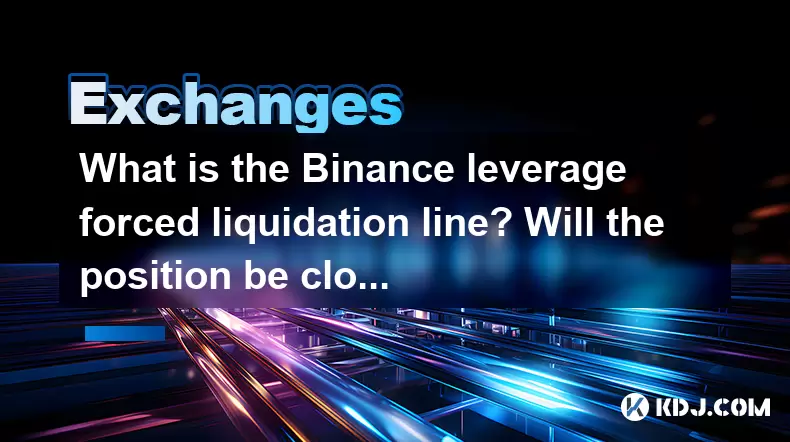
Understanding the Binance Leverage Forced Liquidation Line
Binance, one of the world's leading cryptocurrency exchanges, offers a feature known as leverage trading. This allows users to borrow funds to increase their trading position, amplifying both potential gains and losses. An essential aspect of leverage trading on Binance is the forced liquidation line, a threshold that, when crossed, automatically closes a trader's position to prevent further losses. Understanding this line is crucial for managing risk and ensuring a sustainable trading strategy.
What is the Forced Liquidation Line?
The forced liquidation line on Binance is the point at which the exchange automatically closes a leveraged position to prevent the account from going into a negative balance. This line is calculated based on the maintenance margin, which is the minimum amount of equity required to keep a position open. When the equity in the account falls below this maintenance margin, the position is liquidated to cover the borrowed funds.
To understand this better, let's delve into how the maintenance margin is calculated. The maintenance margin is typically a percentage of the total position value. For example, if you have a position with a value of $10,000 and the maintenance margin requirement is 0.5%, you need to maintain at least $50 in equity to keep the position open. If your equity falls below this threshold, the position will be liquidated.
Factors Affecting the Forced Liquidation Line
Several factors can influence the forced liquidation line on Binance:
- Leverage Level: Higher leverage increases the risk of hitting the forced liquidation line sooner. For instance, a position with 100x leverage will have a much narrower margin for error compared to a position with 10x leverage.
- Market Volatility: Rapid price movements can quickly push a position towards the forced liquidation line. Traders need to be aware of market conditions and adjust their positions accordingly.
- Position Size: Larger positions require more equity to maintain, increasing the risk of hitting the forced liquidation line if the market moves against the position.
Will the Position Be Closed in Advance?
Binance implements a mechanism called partial liquidation to help mitigate the risk of full position closure. When the equity in an account approaches the forced liquidation line, Binance may initiate a partial liquidation to reduce the position size and bring the account back within the safety margin. This can prevent the entire position from being closed, allowing traders to retain some of their position while reducing risk.
However, it's important to note that partial liquidation is not guaranteed and depends on various factors, including market liquidity and the speed of price movements. In highly volatile markets, the position might still be fully liquidated if the partial liquidation cannot be executed in time.
How to Monitor and Manage the Forced Liquidation Line
To effectively manage the risk of forced liquidation, traders should:
- Monitor Account Equity: Regularly check the equity in your account to ensure it remains above the maintenance margin. Binance provides real-time data on account equity and margin levels.
- Use Stop-Loss Orders: Implementing stop-loss orders can help limit losses and prevent the position from reaching the forced liquidation line. A stop-loss order automatically closes the position when the price reaches a predetermined level.
- Adjust Leverage: Reducing leverage can increase the buffer between the current equity and the forced liquidation line. Lower leverage means a larger margin for error.
- Stay Informed: Keep an eye on market news and events that could impact the price of the assets you are trading. Being proactive can help you adjust your positions before they reach the forced liquidation line.
Practical Example of Forced Liquidation on Binance
Let's walk through a practical example to illustrate how forced liquidation works on Binance:
- Initial Position: You open a long position on Bitcoin (BTC) with a value of $10,000 and 10x leverage. Your initial margin is $1,000 (10% of the position value).
- Maintenance Margin: The maintenance margin requirement is 0.5%, so you need to maintain at least $50 in equity to keep the position open.
- Market Movement: The price of BTC drops by 10%, reducing the value of your position to $9,000. Your equity is now $0 (initial margin minus the loss).
- Forced Liquidation: Since your equity has fallen below the maintenance margin of $50, Binance automatically closes your position to prevent further losses.
In this scenario, the position is liquidated at a loss, and the borrowed funds are repaid. Any remaining equity is returned to your account.
Frequently Asked Questions
Q: Can I avoid forced liquidation by adding more funds to my account?
A: Yes, adding more funds to your account can increase your equity and move you further away from the forced liquidation line. However, this should be done carefully, as it involves additional risk and capital.
Q: Does Binance charge any fees for forced liquidation?
A: Binance may charge a liquidation fee, which is typically a small percentage of the position value. This fee helps cover the costs associated with executing the liquidation.
Q: How can I calculate the exact forced liquidation price for my position?
A: The exact forced liquidation price can be calculated using the formula: Liquidation Price = (Entry Price * (1 - Maintenance Margin Requirement / Leverage)) / (1 + Maintenance Margin Requirement / Leverage). This formula takes into account the entry price, leverage, and maintenance margin requirement.
Q: Is there a way to set up alerts for approaching the forced liquidation line?
A: Yes, Binance offers various tools and third-party applications that allow you to set up alerts for when your account equity approaches the forced liquidation line. These alerts can help you take action before your position is liquidated.
Disclaimer:info@kdj.com
The information provided is not trading advice. kdj.com does not assume any responsibility for any investments made based on the information provided in this article. Cryptocurrencies are highly volatile and it is highly recommended that you invest with caution after thorough research!
If you believe that the content used on this website infringes your copyright, please contact us immediately (info@kdj.com) and we will delete it promptly.
- BlockDAG, SEI, Ethena: Top Crypto Performers Under the Microscope
- 2025-08-03 10:50:16
- Bitcoin Blasts Past $119K: How Institutional Adoption and Macro Shifts Fuel the Fire
- 2025-08-03 10:55:16
- Crypto, Grok, and August: Decoding the Latest Trends and Insights
- 2025-08-03 11:10:16
- Crypto, Phishing, and Your Wallet: A New Yorker's Guide to Staying Safe
- 2025-08-03 10:30:16
- Troller Cat Meme Coin Presale Soars: A New King in the Crypto Jungle?
- 2025-08-03 10:30:16
- Grayscale, Altcoin Trust, and Mid-Cap Mania: What's the Deal?
- 2025-08-03 08:50:16
Related knowledge

How to set and manage alerts on the Gemini app?
Aug 03,2025 at 11:00am
Understanding the Gemini App Alert SystemThe Gemini app offers users a powerful way to stay informed about their cryptocurrency holdings, price moveme...
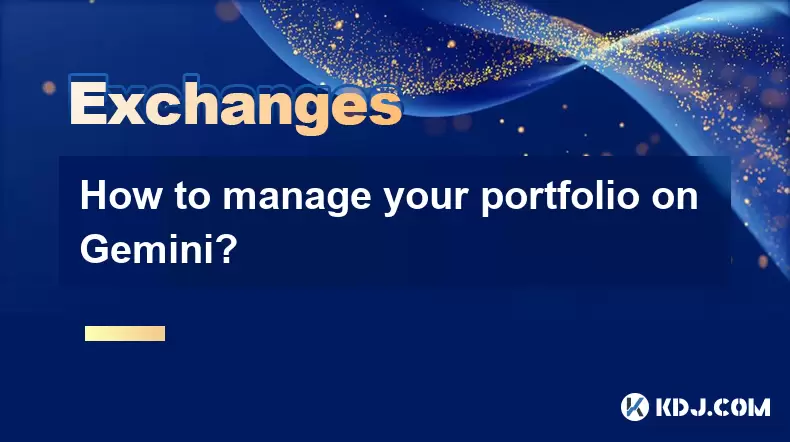
How to manage your portfolio on Gemini?
Aug 03,2025 at 10:36am
Accessing Your Gemini Portfolio DashboardTo begin managing your portfolio on Gemini, you must first log in to your account through the official websit...
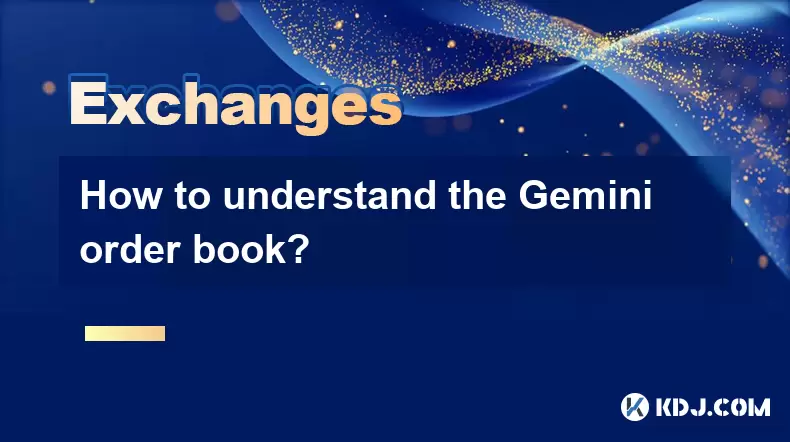
How to understand the Gemini order book?
Aug 02,2025 at 03:35pm
What Is the Gemini Order Book?The Gemini order book is a real-time ledger that displays all open buy and sell orders for a specific cryptocurrency tra...
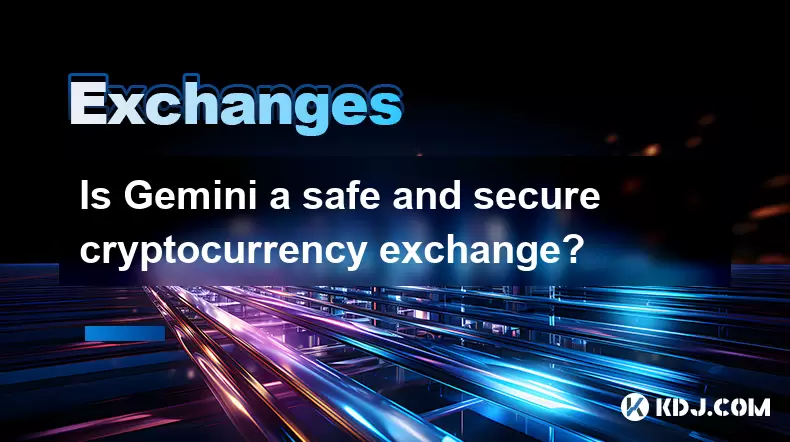
Is Gemini a safe and secure cryptocurrency exchange?
Aug 02,2025 at 10:42pm
Understanding Gemini’s Regulatory ComplianceGemini is a New York State-chartered trust company, which places it under the supervision of the New York ...
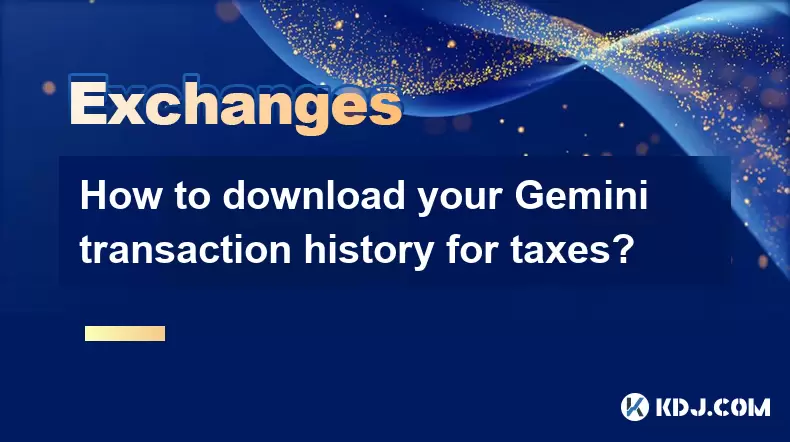
How to download your Gemini transaction history for taxes?
Aug 03,2025 at 09:15am
Understanding Gemini Transaction History for Tax PurposesWhen preparing your cryptocurrency tax filings, having a complete and accurate record of all ...
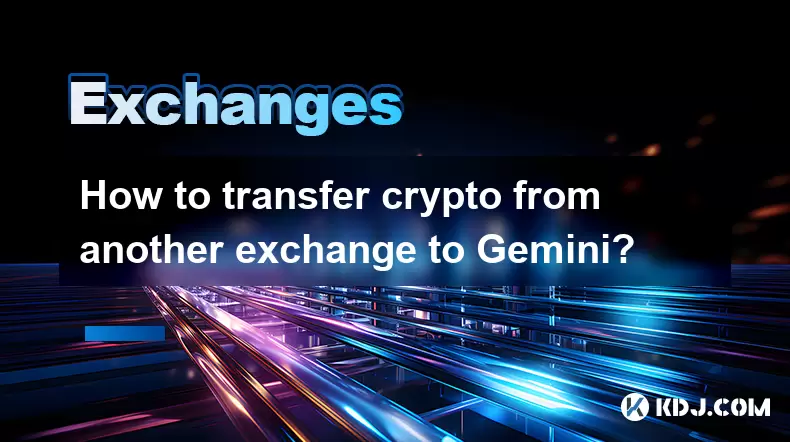
How to transfer crypto from another exchange to Gemini?
Aug 02,2025 at 07:28pm
Understanding the Basics of Crypto Transfers to GeminiTransferring cryptocurrency from another exchange to Gemini involves moving digital assets from ...

How to set and manage alerts on the Gemini app?
Aug 03,2025 at 11:00am
Understanding the Gemini App Alert SystemThe Gemini app offers users a powerful way to stay informed about their cryptocurrency holdings, price moveme...

How to manage your portfolio on Gemini?
Aug 03,2025 at 10:36am
Accessing Your Gemini Portfolio DashboardTo begin managing your portfolio on Gemini, you must first log in to your account through the official websit...

How to understand the Gemini order book?
Aug 02,2025 at 03:35pm
What Is the Gemini Order Book?The Gemini order book is a real-time ledger that displays all open buy and sell orders for a specific cryptocurrency tra...

Is Gemini a safe and secure cryptocurrency exchange?
Aug 02,2025 at 10:42pm
Understanding Gemini’s Regulatory ComplianceGemini is a New York State-chartered trust company, which places it under the supervision of the New York ...

How to download your Gemini transaction history for taxes?
Aug 03,2025 at 09:15am
Understanding Gemini Transaction History for Tax PurposesWhen preparing your cryptocurrency tax filings, having a complete and accurate record of all ...

How to transfer crypto from another exchange to Gemini?
Aug 02,2025 at 07:28pm
Understanding the Basics of Crypto Transfers to GeminiTransferring cryptocurrency from another exchange to Gemini involves moving digital assets from ...
See all articles

























































































